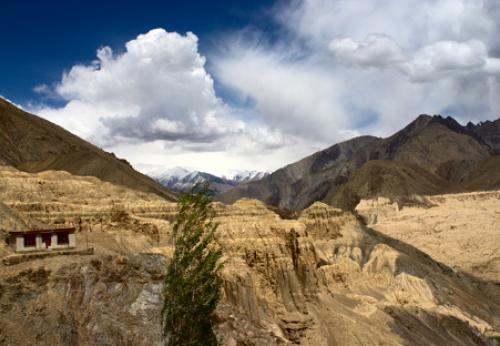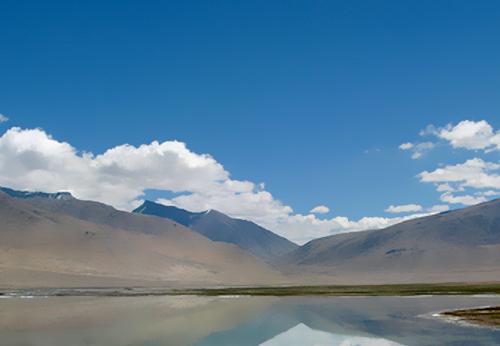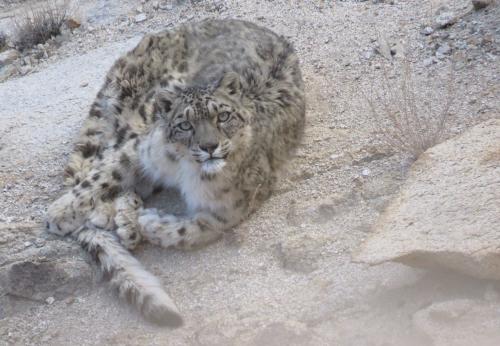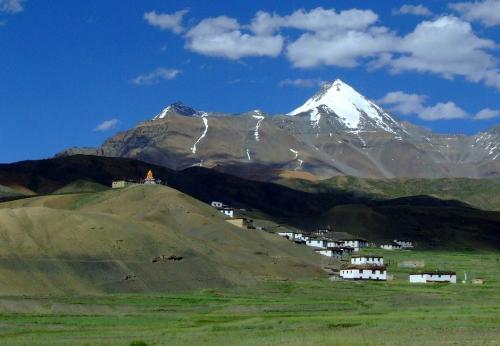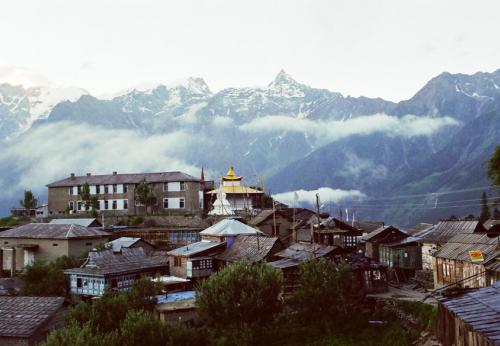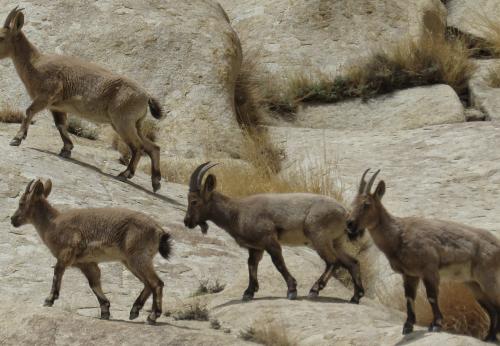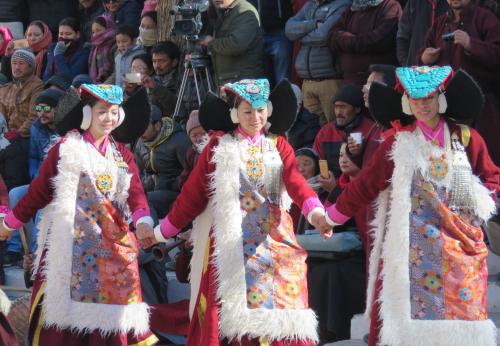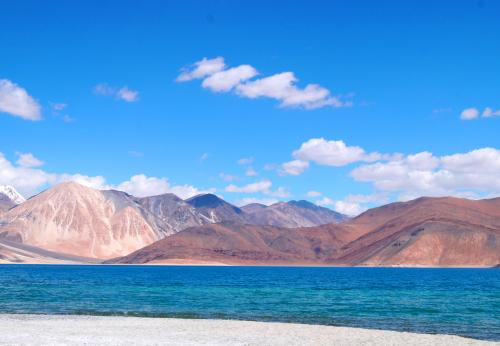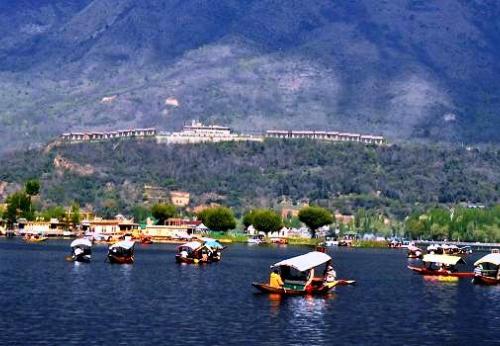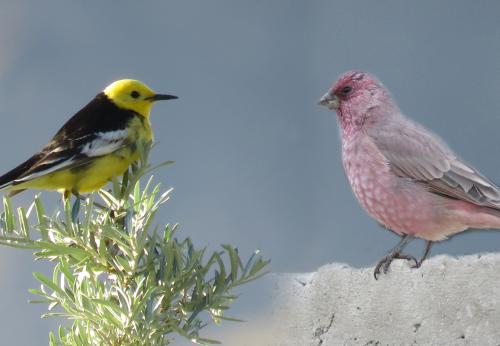Ladakh Fair & Festivals
In Ladakh every occasion: a marriage, a birth of child,harvesting, commemoration of head Lamas, Dosmochey, Losar (new year) etc. are all marked by feasting, dancing and singing of folksongs which forms a big part of Ladakh's living heritage. Most of the festivals are held in winter but some popular festival take place in summer too. The monastic festivals are the heart of all the festivals. They are performed by Monks wearing colorful silk garments and different facial mask.
Description of some important festivals:
Hemis Tse-Chu: Hemis Tse-chu is a festival among the most famous monastic festivals in June-July to commemorate birth of Guru Padmasambhava, the founder of Tantric Buddhism in Tibet. The festival goes on for three days; the sacred dance-drama of the life and mission is performed wearing facial masks and colorful brocades robes. The monkey year is especially a grand celebration, which occurs in a cycle of 12 years. During the monkey year, the four-storey thanka of Guru Padma Sambhava (Thanka is a Tibetan Buddhist painting on cotton, or silk appliqué, usually depicting a Buddhist deity, scene, or mandala.) is hung in the courtyard and other precious thankas are also exhibited. Hemis Tse-chu is not only one of the most auspicios and meritorious deed to attend while your visit to the region, but also is the most fun and exciting festival for our visitiors to attend.
Thiksey, Karsha And Spituk Gustor: Gustor festivals take place at Thiksey, Spituk and Karsha in different months of the year. The festival takes place for two days. The celebration is to mark the victory over evils. Monks of the monasteries do mask dances, which represents the Guardians, Protectors, Gods and Goddesses. The festival ends with the symbolic assassination of evils and burning of the effigy of evils.
 |
 |
 |
Dosmochey: Dosmochey is a festival that is celebrated in Leh (Leh Palace), Likir (Lower Ladakh) and Deskit (Nubra valley) monasteries in the month of February-March.One of the most famous festival among all is Leh Dosmochey, which is celebrated for two days in the courtyard of the Leh palace. The monks from different monasteries perform mask dance every year. The festival takes place as a mark of leaving behind the gone year and welcoming the New Year. The monks of Takthok monastery prepares the offering with Thread crosses which binds all the evil, hungry ghosts and guard against natural disasters of the New year. On the second day of the festival, the offerings are taken out of the town in a procession and burned while people whistle to chase away the evil spirits. There are variety of fun activities in the city organized by different social groups.
Matho Nagrang/Oracles festival: Matho Nagrang is a festival that is celebrated on the 15th day of the 1st month of Tibetan calender at Matho monastery, which is the only monastery of the Sakya School of Tibetan Buddhism. During the two day festival monks perform mask dances wearing colorful silk brocaded robes and mask in different forms of God and Goddesses. The festival is famous because of the appearance of two oracles, after several months of retreat in complete isolation. The two oracles appear in the courtyard of the monastery accompanying mask dancers, they predict future events and people from all a parts of Ladakh come to seek blessings from the oracles.We have a wonderful itinerary specially design for this festival along with Stok Guru Tsechu:- Oracles Festival with dates.
Stok Guru Tsechu/ Oracles Festival: The monks of Stok and Spituk monasteries also celebrate Stok Gruru Tsechu for two days with mask dances performed. It is also held in Feb. around a week before the Matho Nagrang. During the festival two oracle appears, but they are laymen from the same village prepared by monks to receive the spirit of the deities.
Phyang Tsedup : Phyang Tsedup takes place in July / August. Like other monasteries, monks wearing colorful brocade robes and Mask in the form of different god and goddesses perform mask dances. The huge thanka of Skyoba Giksten Gonbo is hung in the courtyard during the festival.
Yuru Kabgyat : The 2-day festival takes place in July in Lamayuru monastery around 125 kms. from Leh. Monks like other monastic festival perform mask dances. During the festival monks perform prayer and rituals to get rid of disaster and pray for the World peace.
Losar Celebration : The Losar (New Year) celebration is followed by Galdan Namchot, the birth anniversary of Tsongkha pa who introduced Gelukpa School of order. During Namchot people illuminate their houses, monasteries and mountains and make offerings in the houses and monasteries.
The Losar festival is celebrated in the eleventh month of luncar calendar, two months ahead of Tibetan New Year. In early 17th century, King Jamyang Namgyal decided to lead an expedition against the Baltistan forces in winter; and before he proceed to this journey, he decided to celebrate the festival two months before. Later it became a tradition and being celebrated in the eleventh month.
The festival lasts for around a month, during which Gods, deities, ancestors and even the animals are fed without fail. Images of Ibex are made as auspicious symbol, walls of the kitchens are dotted and are believed to bring prosperity in coming year. The Metho (procession of fire) is thrown out chanting slogans and chasing hungry ghosts and evil spirits, and they return with rocks of ice as auspicious symbol and these are kept in the store. In some villages there is a tradition of making Old men and women, from this snow which last for a week. Over all ; the Losar, all children, the young and olds enjoy and celebrate the festival. All family members get together to celebrate if someone missing will have their cups filled with tea by their name.
 |
 |
 |
Ladakh Festival
Ladakh festival takes place in September for one week every year in Leh and surrouding villages. The inauguration ceremony takes place in Leh on large scale with the procession of various cultural troupes from different part of Ladakh. It passes through Leh Market dancing, singing with traditional music, in colorful traditional Ladakhi dresses, and finishes at Polo ground after performing their best dances and songs. The festival last for 07 days with regular program in different villages. The program includes Archery, Polo Matches competition, Mask Dances at the Chowkhang Vihara from the monasteries, traditional dances by cultural troupes from Villages. There are series of musical concert and dance program in Leh town.
Sindhu Darshan (Visit Indus) Festival
Sindhu Darshan is three-day festival held from 1st to 3rd June, in Shey Manla around 8 kms. from Leh on the bank of Indus river. For the first time it was organized in October 1997, as a symbol of unity and Communal harmony and national integration. Whilst promoting domestic tourism in Ladakh. It is also a symbolic salute to brave soldiers of India who have been fighting not only with enemies in the human form but also in the form of nature.
During this festival artists from different parts of the country perform traditional dances and people from all religions, castes and regions participate.
Other Festivals
There are a number of other festivals that take place in Ladakh. Some of the festivals that are held in Ladakh include Lamayuru, which takes place in July. Phyang takes place in July-August, after 10 days of Phyang, another festival Tak-thok is held. The special feature of Phyang festival is the exhibition of thangka, which is done every year unlike the Hemis, where thangka is exhibited once in 12 years.
Maitreya's Tours offers all the Festival trip of Leh-Ladakh. For more information or to book a tour, please click here to enter your query.



